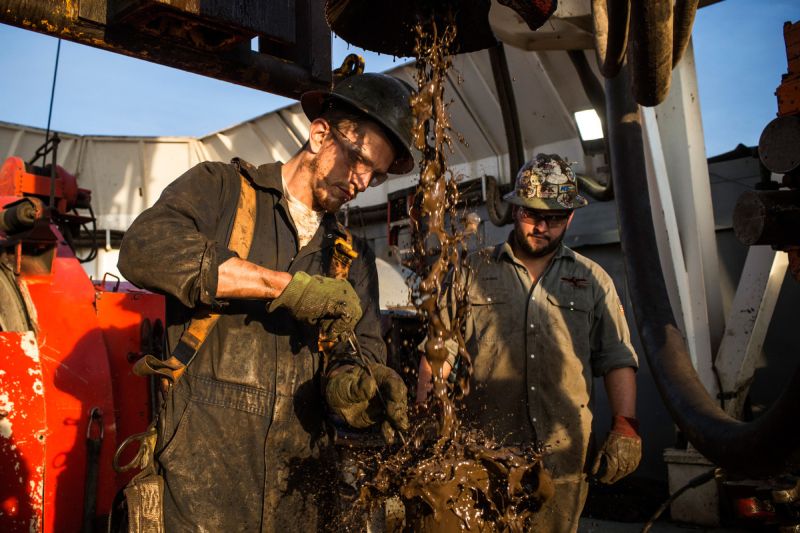Michael Bastasch
Wyoming regulators have found hydraulic fracturing, or fracking, did not likely contaminate water supplies in the town of Pavillion four years after the Environmental Protection Agency (EPA) conducted its own botched investigation.
State officials published findings Monday showing groundwater contamination near Pavillion was not likely caused by fracking, but instead by gas that naturally seeped into groundwater wells. The state’s Department of Environmental Quality (DEQ) says the “[e]vidence suggests that upward gas seepage… was happening naturally before gas well development.”
“It is unlikely that hydraulic fracturing fluids have risen to shallower depths intercepted by water- supply wells,” DEQ writes in its 30-month investigation of Pavillion’s water. “Evidence does not indicate that hydraulic fracturing fluids have risen to shallow depths intersected by water-supply wells.”
“The likelihood that the hydraulic fracture well stimulation treatments… employed in the Pavillion Gas Field have led to fluids interacting with shallow groundwater… is negligible,” DEQ adds.
The state’s findings are a huge blow to environmentalists who have been using Pavillion as a main source of evidence of how fracking was contaminating groundwater. Pavillion was even featured in the 2010 anti-fracking film “Gasland” while the region was being investigated by the EPA and state officials.
“Gasland” featured a Pavillion landowner named John Fenton who said when “we turn on the tap, the water reeks of hydrocarbons and chemicals.” The implication was that gas in Fenton’s water was caused by recently-started fracking operations. “Gasland” director Josh Fox used Fenton’s story to bolster his case that fracking was contaminating water.
Fox and other environmentalists based their claim that fracking was contaminating Pavillion’s water on a 2011 draft report by the EPA that suggested fracking as a cause for gas showing up in people’s water — this was the first time the agency linked fracking to groundwater contamination.
The EPA said “that compounds likely associated with fracking chemicals had been detected” in Pavillion’s groundwater and that “fracking occurred below the level of the drinking water aquifer and close to water wells,”according to the Casper Star-Tribune.
But EPA’s 2011 report was heavily criticized by federal and state officials for shoddy data collection methods that “biased” results.
The U.S. Geological Survey (USGS) basically disqualified one of the two water monitoring wells used by EPA near Pavillion because it was poorly built. This comes after decades of USGS documenting the poor water quality in the Wind River Formation, which Pavillion sits on top of.
For example, USGS found in 1992 the water quality “is variable in the Wind River Formation because this unit has highly variable lithology, permeability, and recharge conditions.”
On top of that, the Bureau of Land Management suggested EPA’s well-water monitoring had actually introduced “bias in the samples” and said the agency’s data “should not be prematurely used as a line of evidence that supports EPA’s suggestion that gas has migrated into the shallow subsurface due to hydraulic fracturing or improper well completion until more data is collected and analyzed.”
In 2012, Wyoming DEQ officials presented findings of its “down-hole camera” probe of EPA’s Pavillion monitoring wells. The DEQ found EPA didn’t use stainless steel casting, instead using carbon steel, in its wells and found lots of mud and cuttings at the bottom of it — these factors could have contaminated EPA’s well-water results.
Follow Michael on Facebook and Twitter





1 comment
… [Trackback]
[…] Find More Info here on that Topic: thelibertarianrepublic.com/wyoming-officials-prove-fracking-didnt-poison-drinking-water-4-years-after-epas-botched-investigation/ […]